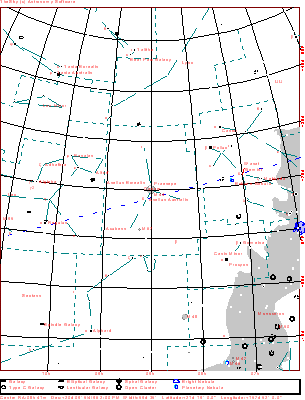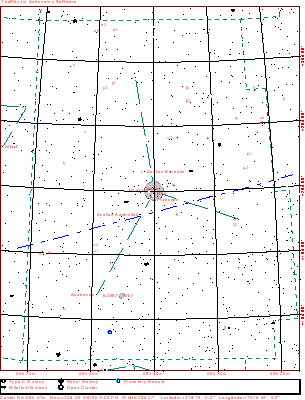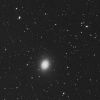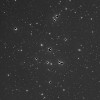
| Home | Deepsky Atlas | TheAstronews | Links | Solar System | ||||||

Hawaiian Astronomical SocietyConstellations: Cancer -- Unfortunate Crab |
||||||||||
The oracle at Delphi assigned Heracles (often called Hercules) a series of labors to expiate the sin of murdering his family. The second labor involved going to Lerna to kill the hideous Hydra (now a constellation of that name). Heracles brought his nephew Iolaus (son of his twin brother Iphicles) on this trip as his assistant. This creature of nine heads lived in a swamp. Its mere breath could kill a person. Heracles shot a fire-arrow into the Hydra's den to lure the monster out while Iolaus set the nearby shrubs on fire to confuse the creature. Actually killing the Hydra was easier said than done, since one of the heads was immortal, and the others almost as bad. When Heracles chopped off one, two new heads grew up to replace them.
To aid Hydra, Hera, Heracles' nemesis, sent a crab (Cancer) to distract him, but as soon as the crab came out of the swamp, Heracles crushed it (this is the reason the constellation of Cancer has a crooked shape). Eventually Heracles succeed in killing the Hydra, and the crab got a rather dull group of stars for its efforts.
 Click the map for a 909x1199 version of the above. Click here for a map better suited for use in the field.
Click the map for a 909x1199 version of the above. Click here for a map better suited for use in the field.

This is a more detailed view of the constellation. The map displays stars to magnitude 10, and deepsky objects to magnitude 12. Click here for a map better suited for use in the field.
 73k JPEG Caldwell 48 (NGC2775) is quite bright (mag. 11.2), quite large (5'x4') spiral galaxy with a sharply defined core. Dreyer also calls it round and resolvable. This means that many knotted arms form a dark lane. You find this one in the south-east portion of the constellation. Two other galaxies form targets for larger scopes: NGC2777 (at mag. 14.2) it in the upper, left (north and east) of the photo. NGC2773 (mag. 15) sits in the upper right. None are more than 14' from each other. Image is from the Digital Sky Survey. 73k JPEG Caldwell 48 (NGC2775) is quite bright (mag. 11.2), quite large (5'x4') spiral galaxy with a sharply defined core. Dreyer also calls it round and resolvable. This means that many knotted arms form a dark lane. You find this one in the south-east portion of the constellation. Two other galaxies form targets for larger scopes: NGC2777 (at mag. 14.2) it in the upper, left (north and east) of the photo. NGC2773 (mag. 15) sits in the upper right. None are more than 14' from each other. Image is from the Digital Sky Survey.
|
 97k JPEG M44 (NGC2632) is sometimes called the "Beehive Cluster," or the Manger (Praesepe). Dreyer describes it as a bright (mag.3.1), loose (1.5°) open cluster. It looks like a small wisp of cloud to the naked eye in a barren section of sky. Binoculars are especially useful with this object. This image, from the Digital Sky Survey, captures most of it. 97k JPEG M44 (NGC2632) is sometimes called the "Beehive Cluster," or the Manger (Praesepe). Dreyer describes it as a bright (mag.3.1), loose (1.5°) open cluster. It looks like a small wisp of cloud to the naked eye in a barren section of sky. Binoculars are especially useful with this object. This image, from the Digital Sky Survey, captures most of it.
|
 86k JPEG M67 (NGC2682) is described as a condensed, very bright (mag. 6.9) and large (30') open cluster. Consisting of mag. 10 stars, you find it 8.5° SSE of the Beehive Cluster. Yet another DSS image. 86k JPEG M67 (NGC2682) is described as a condensed, very bright (mag. 6.9) and large (30') open cluster. Consisting of mag. 10 stars, you find it 8.5° SSE of the Beehive Cluster. Yet another DSS image.
|
If you have any questions about the Hawaiian Astronomical Society
please
(link requires javascript).